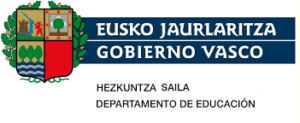 Nerea Bilbao Barrenetxea,together with the head of the IzotzaLab Sérgio Henrique Faria and further coauthors, have published a new scientific article entitled: Declining water resources in the Anduña River Basin of Western Pyrenees: Land abandonment or climate variability?
Nerea Bilbao Barrenetxea,together with the head of the IzotzaLab Sérgio Henrique Faria and further coauthors, have published a new scientific article entitled: Declining water resources in the Anduña River Basin of Western Pyrenees: Land abandonment or climate variability?
The paper has appeared in Journal of Hydrology: Regional Studies.
How to cite this article: Nerea Bilbao-Barrenetxea, Patricia Jimeno-Sáez, Francisco José Segura-Méndez, Gerardo Castellanos-Osorio, Adrián López-Ballesteros, Sergio Henrique Faria, Javier Senent-Aparicio (2024). Declining water resources in the Anduña River Basin of Western Pyrenees: Land abandonment or climate variability?, Journal of Hydrology: Regional Studies, 53:101771, ISSN 2214-5818, https://doi.org/10.1016/j.ejrh.2024.101771
ABSTRACT
Study Region:
Mountains play a crucial role in supplying water for consumption, irrigation, and hydroelectric power. However, they are highly vulnerable to climate change. The Pyrenees exemplify a mountainous region undergoing significant changes, notably in land-use practisces, with a significant shift towards forest cover.
Study Focus:
We use the SWAT model, to analyse in depth two factors that most influence the hydrological cycle: land-use change and climate variability. The model is calibrated and validated using daily streamflow for the periods 1992–2004 and 2005– 2018. The following results were obtained for both periods: an NSE of 0.51, an R2 of 0.72, and a PBIAS of –12.67 % for the calibration period and an NSE of 0.55, an R2 of 0.75, and a PBIAS of –16.49 % for the validation period, indicating that the model accurately represented the daily streamflow. Subsequently, we designed three scenarios based on combinations of historical data to quantify the contribution of each factor.
New Hydrological Insights for the Region:
Comparing the scenarios confirms the downward trend of streamflow in the region and provides quantitative information on the influence of each factor on this decline. Notably, that land-use changes account for 41.4 % almost as much as the climate variability. Furthermore, we observed an increase in the frequency and magnitude of floods with an increase in flood parameters of about 40%. The alteration of these parameters is slightly mitigated by reforestation, leading to a decrease of 5%.




